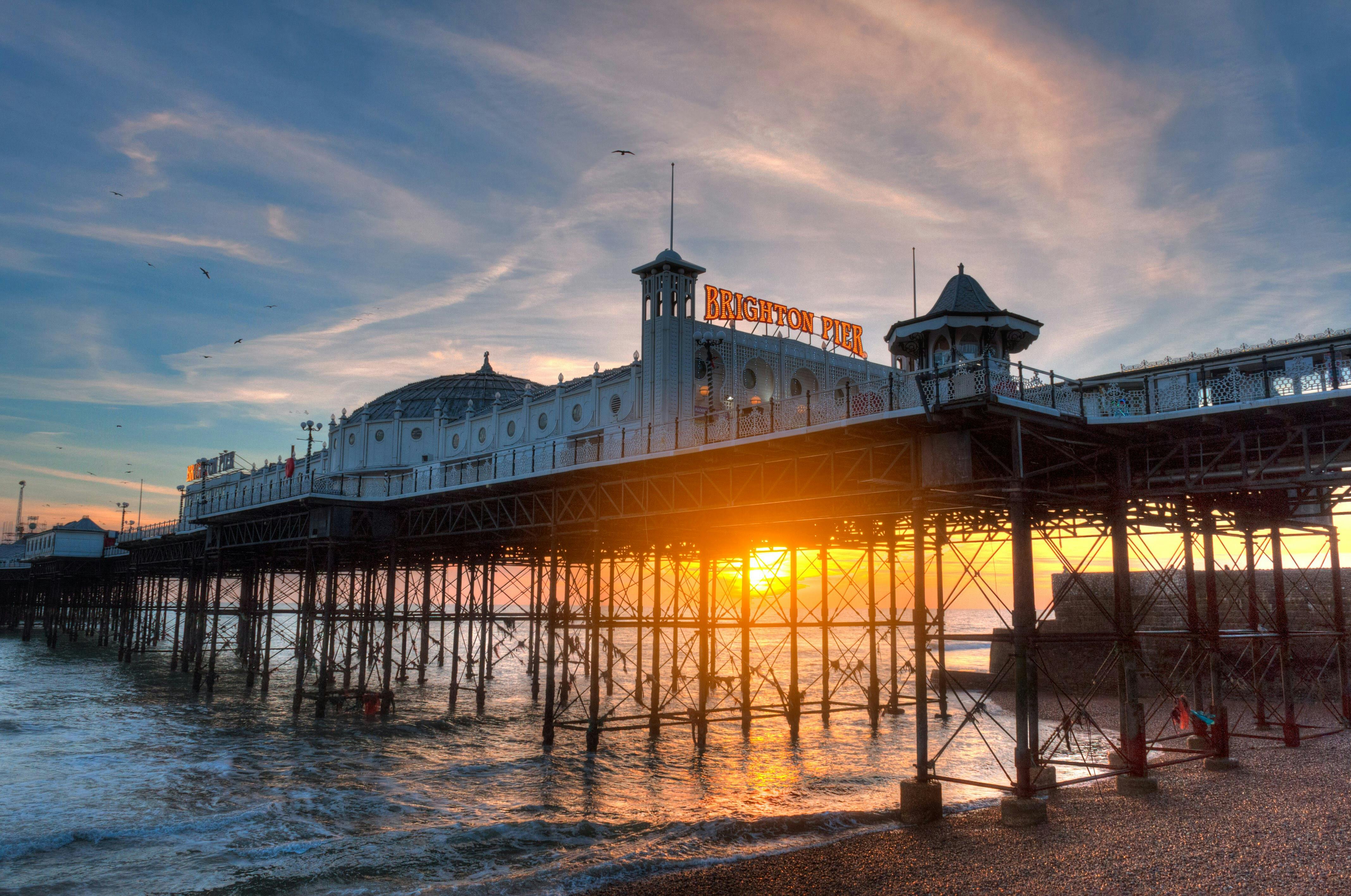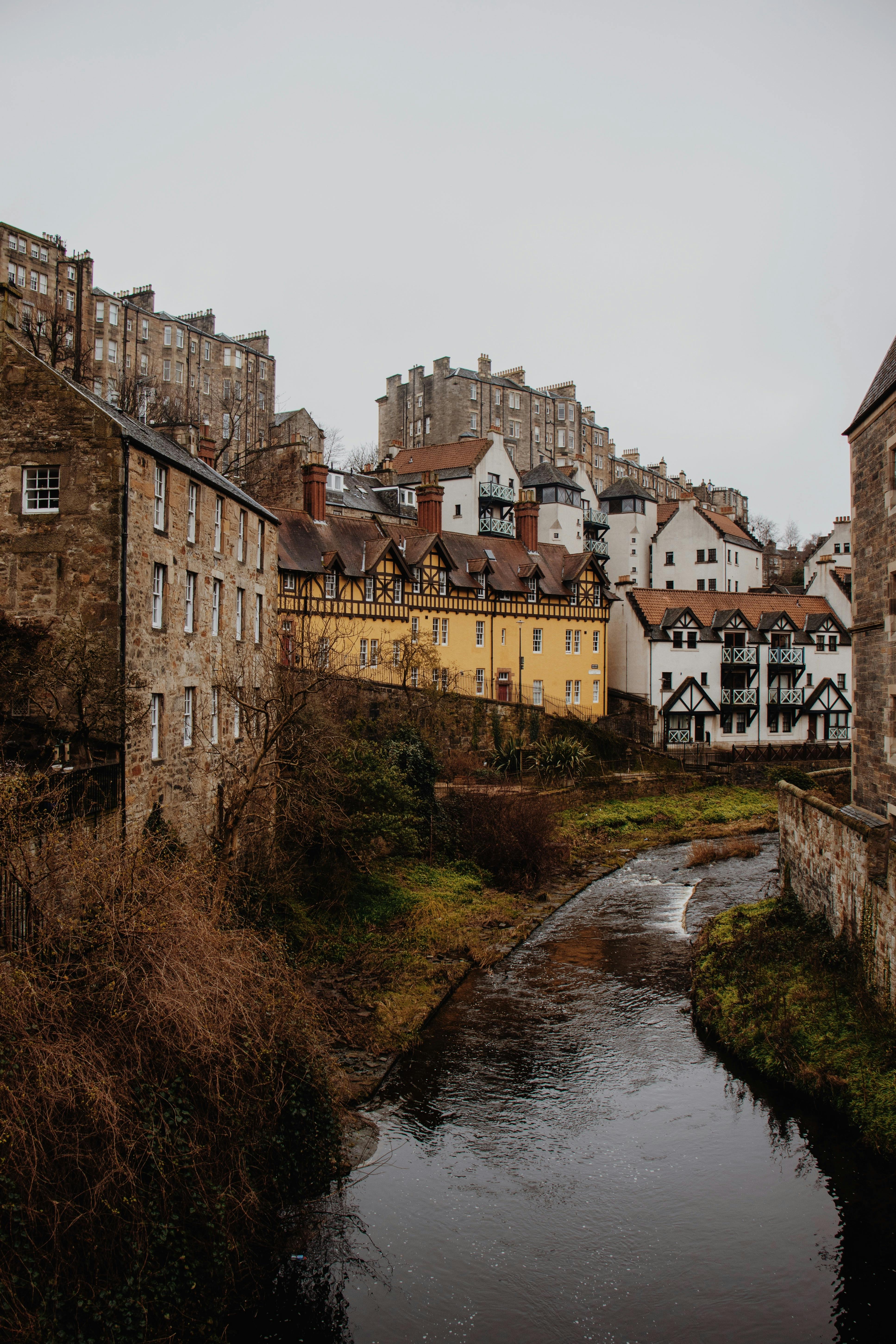Explore the top 10 most expensive places to live in the UK, where luxury living comes at a premium price

Updated: 26 March 2024
The UK boasts some of the world’s most sought-after postcodes with a premium price to match. We’re not just talking about London. There are plenty of dream homes just a short commute away. From the historic streets of Cambridge to the stunning coastlines of Bournemouth, the most expensive places to live in the UK offer unparalleled luxury, heritage, and a high standard of living.
Before we reveal where the most expensive places to live in the UK are, let’s put into context where we are now.
What is the cost of living comparison for North vs South?
The housing market in 2023 reflects ongoing trends thanks to five bank rate increases, with significant regional disparities in property prices. In the southern regions, house prices started to decline in the first half of the year. This is a trend not initially mirrored in the north, where housing remained more affordable. By the end of 2023, a general decrease in house prices was observed nationwide, with an average fall of 1.2%.
The cost of living crisis in the UK has only deepened the North-South divide. In the north, cities like Burnley, Glasgow, and Blackpool are facing the highest inflation rates, significantly impacting households as prices rise faster than wages.
The south experiences a somewhat different economic landscape, with London among the most expensive places to purchase property, even though it has the smallest annual growth rate in house prices.
The UK’s most expensive places to live
With this backdrop, here are the top 10 most expensive places to live in the UK for renting, according to Numbeo.
1. London
As expected, London tops the list. London's housing market continues to be characterised by high demand and limited supply, leading to high rental costs.
The average monthly rent for a one-bedroom apartment in the city centre at £1,800.73 per month significantly surpasses the national average, highlighting the premium placed on living in the capital. This situation is fueled by London's status as a global financial, cultural, and educational hub, attracting a wide range of residents, including professionals, students, and international expatriates.
The competition for affordable options remains fierce, with many residents spending a significant portion of their income on rent. The high cost of living in London, driven by its unmatched opportunities and amenities, firmly cements its place as one of the most expensive places to live in Britian.
2. Cambridge
Cambridge’s housing market is primarily driven by a steady influx of students, academic staff, and professionals drawn to the city's educational and research institutions. This demand is set against a backdrop of limited housing supply, particularly in the city centre, contributing to higher rental costs.
The average rent for a one-bedroom apartment in Cambridge's city centre sits at approximately £1,261.11 per month. This high cost is partly due to the city's historic nature, which limits new construction. It is also an attractive option to commuters who work in London but prefer Cambridge's quieter setting.
3. Brighton
With its beachfront cool and urban sophistication, Brighton is one of the UK's most desirable places to live, with the average rent for a one-bedroom apartment in the city center reaching around £1,182.15. The city's direct train links to London enhance its attractiveness, offering the best of both urban living and seaside relaxation. This results in higher rental and property prices.

Brighton Pier at low tide with a sunset as backdrop
The housing market in Brighton is marked by Victorian terraces, modern apartments, and regency properties, which have seen consistent appreciation in value due to high demand. This demand is compounded by the city's limited space for new builds, preserving its historic charm but also restricting the housing supply.
4. Oxford
Oxford is not just an academic powerhouse. It’s also one of the most expensive places to live in the UK with the number of students, academics, and tourists coming in. The average rent for a one-bedroom apartment in the city center stands at £1,135.02, reflecting the premium placed on living in such a prestigious locale.
The city's housing market is strained further by its international appeal and the high standards of living it offers. Oxford's global reputation as a centre of learning and culture makes it an attractive place to reside, contributing to the competitive housing scene. The blend of medieval architecture, modern amenities, and green spaces creates a unique living environment but also means that accommodation comes at a significant cost.
Here’s Oxford through the eyes of a PhD student who has lived there for 3 years:
5. Milton Keynes
Milton Keynes is a good blend of urban and natural living environments, with an average rent for a one-bedroom apartment in the city centre noted at £1,003.43 monthly. This reflects both the city's appeal to professionals seeking a balance between city living and access to nature.
Milton Keynes is home to a variety of housing options, from modern apartments to family homes, catering to a diverse demographic. Its strategic location also offers convenient transport links to London and other major cities, making it a desirable place for commuters.
6. Bristol
Bristol offers a compelling mix of urban living and access to natural beauty. This blend is what drives demand in a housing market characterised by diversity—from modern city-centre apartments to suburban family homes.
Areas like Bishopston, Horfield, and Bedminster appeal to young professionals and students with the abundance of pubs and restaurants. For families, Totterdown provides priced houses and good schools. St George emerges as a budget-friendly option for those looking to get on the property ladder, and Westbury on Trym is favored by families seeking a more relaxed village vibe.

colourful buildings near water and boats on harbour in Bristol
The housing costs in Bristol can be steep compared to other parts of the country, with city centre flats averaging £984.29 per month. Moving a bit further out can reduce rental costs significantly.
Bristol compensates with decent salaries, fair rent, and a wide range of cultural and recreational activities that contribute to a high quality of life.
7. Reading
Reading is strategically positioned in the UK's tech corridor, attracting professionals with its robust employment market in the Thames Valley. The average rent in Reading is £963.49 a month.
The town boasts exceptional transport links, including the second busiest railway hub outside of London. The hub offers direct routes to many UK cities and about 140 trains daily to London Paddington. Reading's proximity to Heathrow and Southampton airports adds to its connectivity, making it an ideal location for both domestic and international travelers.
Areas such as Caversham offer easy access to London with a blend of independent shops and eateries, while Sonning features a mix of large period homes and cottages. For those seeking affordability, Earley presents 20th-century properties along with excellent schools, making it ideal for families.
8. Manchester
Manchester's housing market is robust due to a combination of affordable living costs, a diverse range of accommodation options, and a growing population. New property developments have sprung up to accommodate the city's expanding population. This growth in housing options makes Manchester an attractive destination for both Brits and expats looking for a place to call home.
Thriving industries in the city like finance, law, biotechnology, and digital media contribute to the demand for housing. Despite the availability of job opportunities, salaries in Manchester are lower than in London and other major European cities. However, the lower cost of living, particularly in terms of rent, balances this out, allowing for a comfortable lifestyle.
Areas like The Northern Quarter, Rusholme, Spinningfields, and Sale are highlighted as some of the best places to live in Manchester. The diversity of neighborhoods caters to a wide range of lifestyles, reinforcing Manchester's appeal as a desirable place to live.
9. Edinburgh
Living in Edinburgh offers a blend of historic charm, stunning green spaces, and a vibrant cultural scene. However, these diverse options come at a cost, with Edinburgh's housing market being competitive and relatively small, especially in more sought-after areas like the New Town.
Edinburgh's compact nature means it's a highly walkable city, complemented by excellent public transport links, including trams and buses, making it easy to navigate without a car. With more than 100 parks and an abundance of greenery, Edinburgh is known as the UK’s second greenest city, offering residents ample outdoor spaces to enjoy.
Rent in Edinburgh stands at £916.76 a month.

multi-storey buildings facing a creek in Edinburgh
10. Bournemouth
Bournemouth presents an appealing housing market for various buyer and renter profiles. Its seaside charm, combined with a mix of period homes and modern apartments, contributes to Bournemouth’s status as a prominent coastal resort.
Over the past decade, house prices in Bournemouth have seen a significant increase, which reflects a strong and growing property market. The average rent is now £851.27 a month.
Bournemouth’s seven miles of award-winning beaches, 2,000 acres of gardens and parks, and its vibrant town filled with restaurants, shops, and nightlife make it an attractive place to live and invest in.
What’s driving the high property prices in the UK?
High property prices in the UK are driven by a combination of factors, reflecting the complex interplay of supply and demand in the housing market, alongside other economic and policy-related influences.
One of the primary drivers is the basic principle of supply and demand. The impact of supply and demand on housing prices is further influenced by mortgage rates, with lower rates reducing the cost of borrowing and thereby increasing demand. Policy changes, such as smaller deposit requirements and stamp duty holidays, also play a significant role in influencing market behaviour.
The size and condition of a property, along with its location, are significant factors affecting price. Larger properties with more bedrooms and bathrooms, as well as those in prime locations near good schools, transport links, and amenities, command higher prices.
The condition and age of the property are also crucial, with newer, more energy-efficient homes often fetching higher prices than older ones in need of repair or renovation.
Finding value in high-cost areas in the UK
Making the most out of your money requires a strategic approach to property search and purchase. It will require diligent research and a bit of creativity, but the potential rewards make the effort worthwhile.
Here are some best practices to keep in mind when finding a home to purchase:
Identify growth areas
Look for areas within high-cost regions that are on the cusp of development or regeneration. These areas often offer better value and the potential for property value growth. Speak to your agent or broker to find out more about these locations.
Consider properties needing work
Properties that require renovation or refurbishment can often be purchased at a lower price point. Investing in improvements can increase the property's value significantly without having to put out too much money.
Look for undervalued features
Properties with unique or undervalued features, such as additional land or outbuildings, might offer more value. These features can be leveraged to increase the property's overall worth.
Use government schemes
In the UK, schemes like Help to Buy can provide assistance to buyers in high-cost areas by offering equity loans or shared ownership options that make purchasing more accessible.
Professional advice
Engaging with a local real estate expert or a buyer’s agent who understands the ins and outs of the high-cost market. They can provide you with insights and access to deals that might not be publicly listed.
You’ll want to discuss interest rates with your agent or broker, too. Look at our interest rates database to see how much the top 10 mortgage providers offer.
What’s the outlook for the property market?
The UK's property landscape is shaping up to be a mixed bag of cautious optimism and undeniable challenges.
Estate agents like Savills have spotted a silver lining with a slight uptick in house prices early in the year, suggesting a gentle pulse in demand that could breathe life into the market. However, this optimism is tempered by the reality of last year's technical recession. The possibility of rate cuts later in the year throws an element of unpredictability into the mix, especially concerning mortgage rates.
On the other side of the spectrum, Rightmove strikes a more conservative note, forecasting a modest dip in asking prices by the end of 2024. This hints at a market slowly settling into a new normal. Still, the spectre of rising mortgage rates looms large.
After choosing to live in one of the UK’s most expensive places – what's next?
What does all this mean for those eyeing the most expensive places to live in the UK? Well, sellers might find themselves needing to get more competitive with their pricing if they want to catch the eye of the more cautious buyer of 2024.
There’s still hope for some recovery in the ritziest corners of the UK, but the broader housing market continues to navigate through a sea of policy shifts. For anyone looking to make their move in the upscale property market, 2024 will be a year where flexibility and savvy planning could make all the difference.
Do you have a favourite among our list of the UK’s most expensive places to live? Let us know in the comments.



